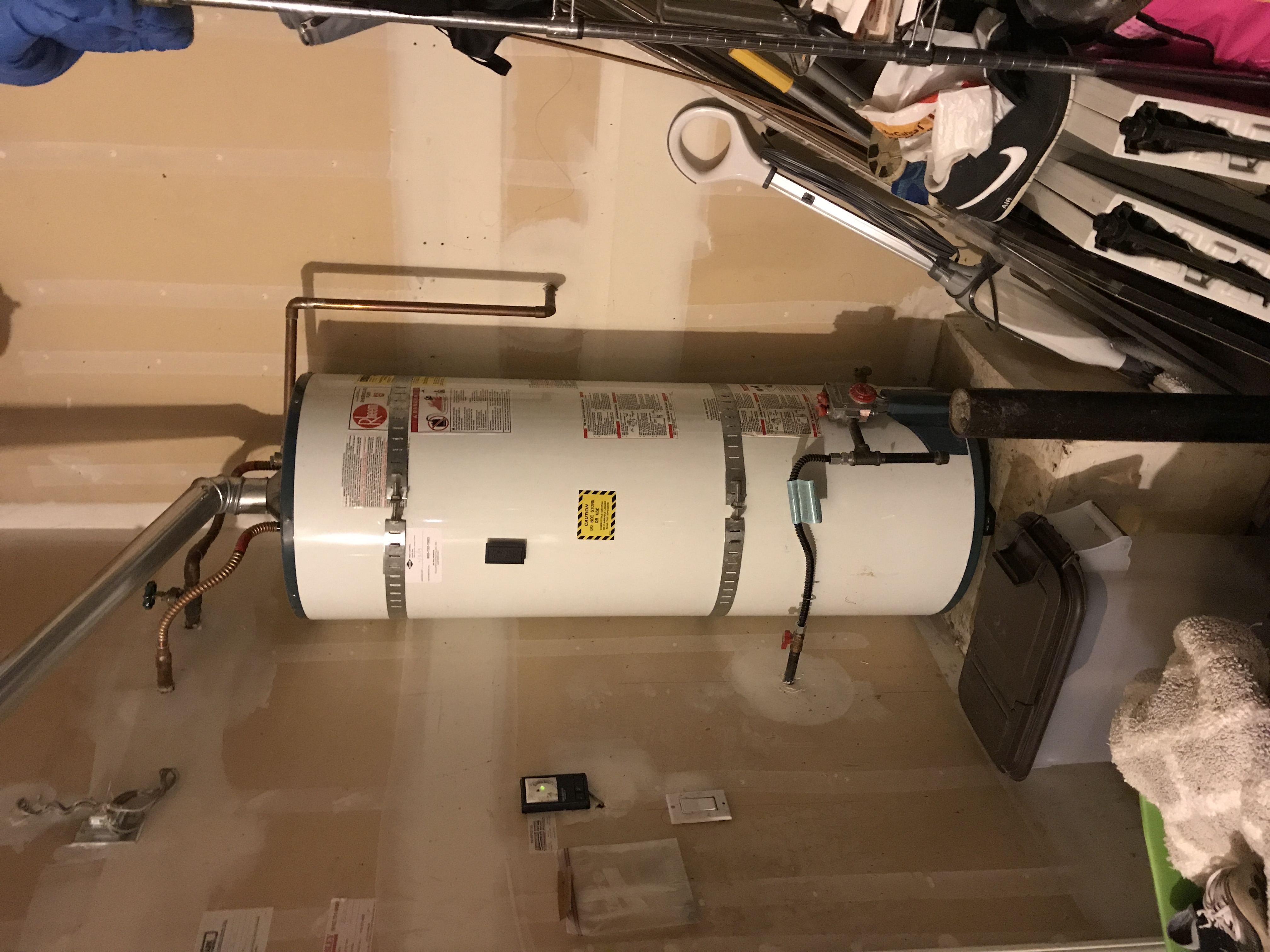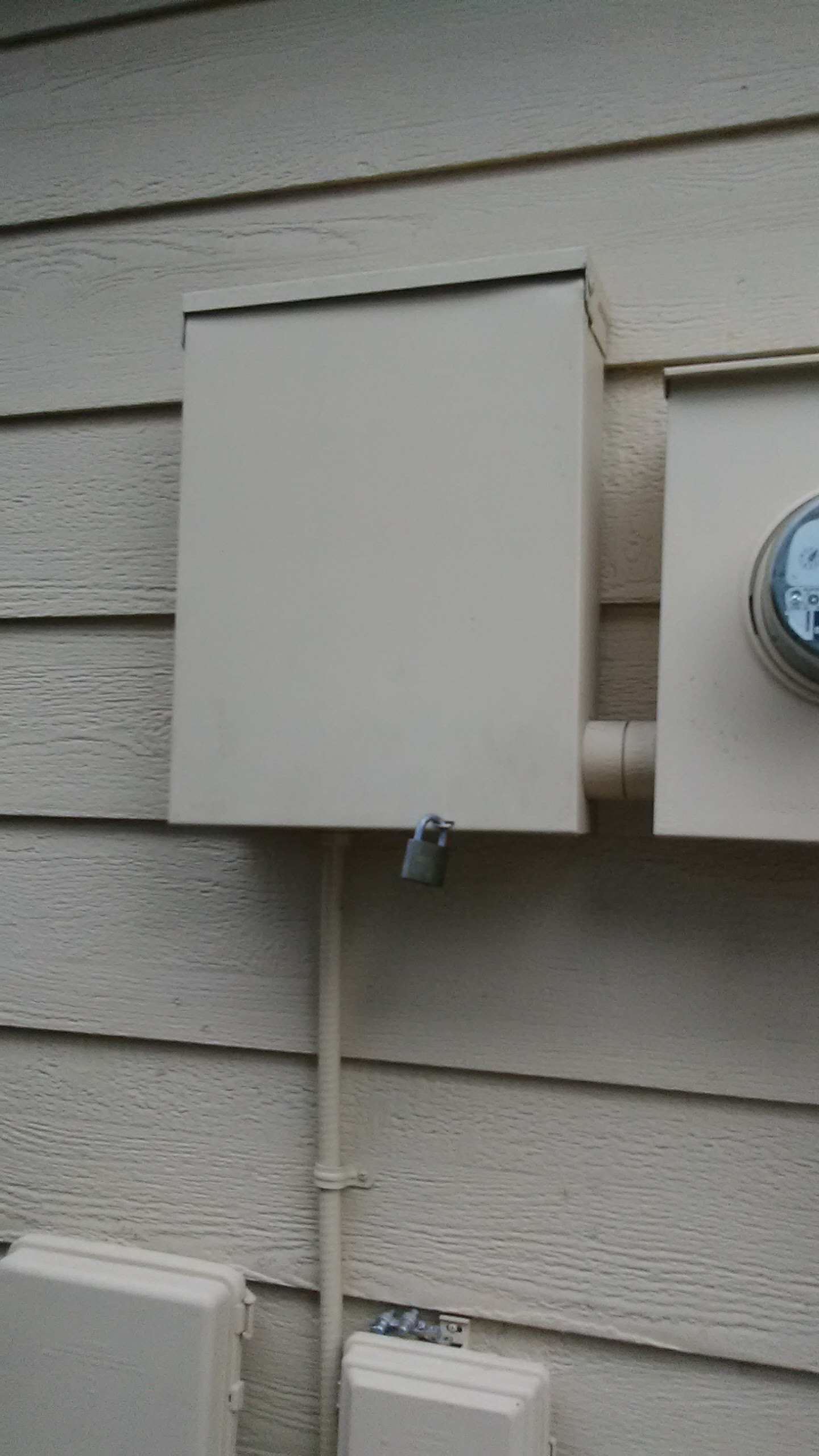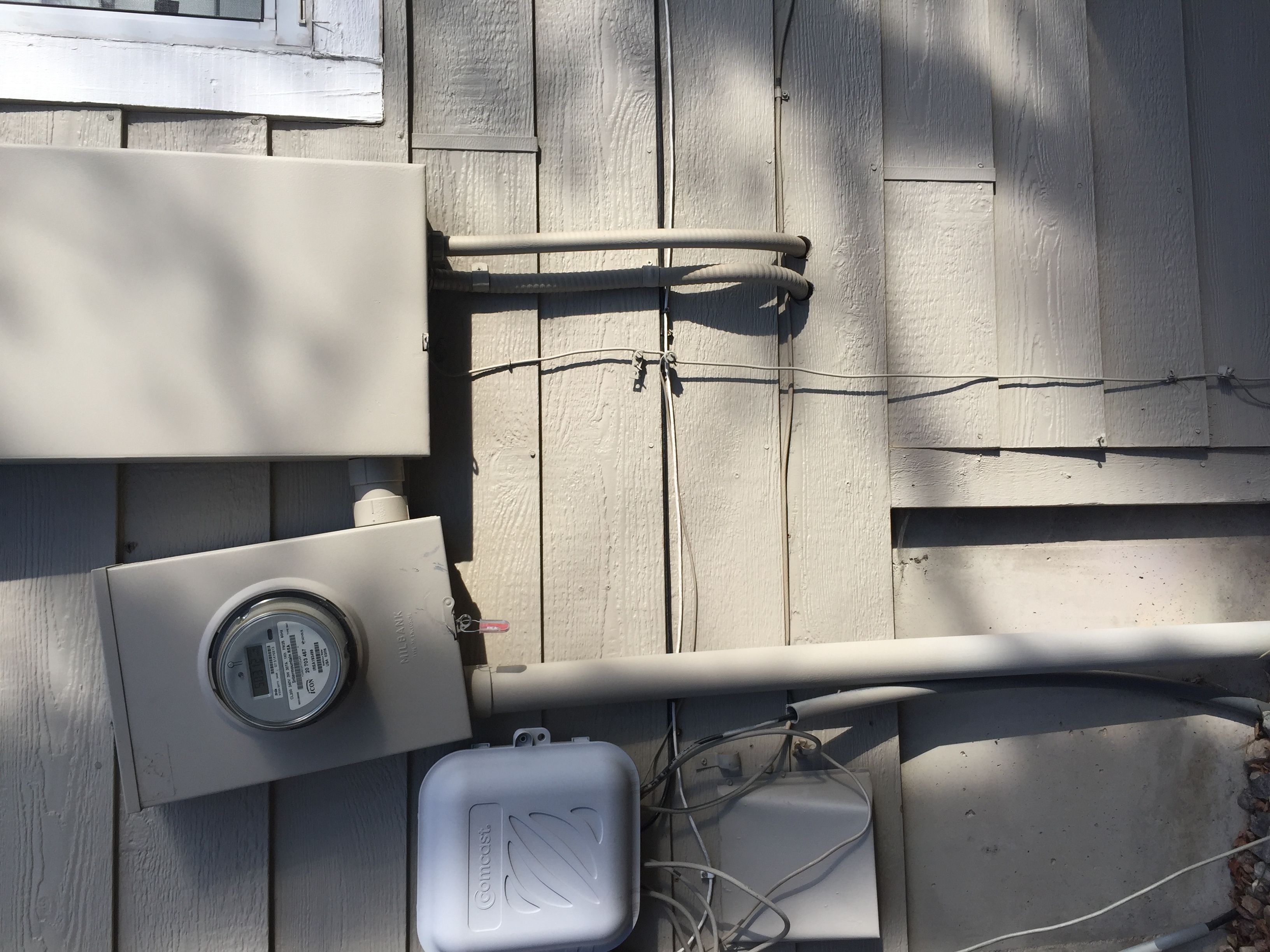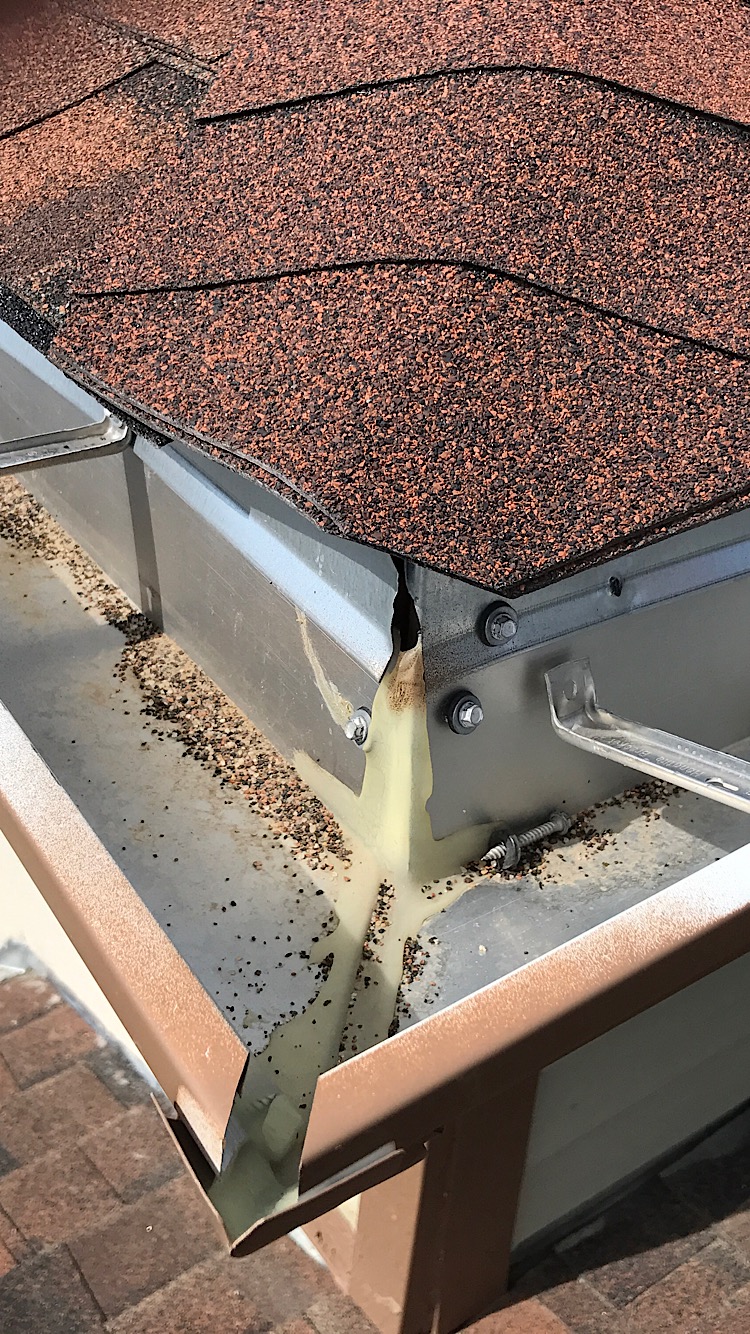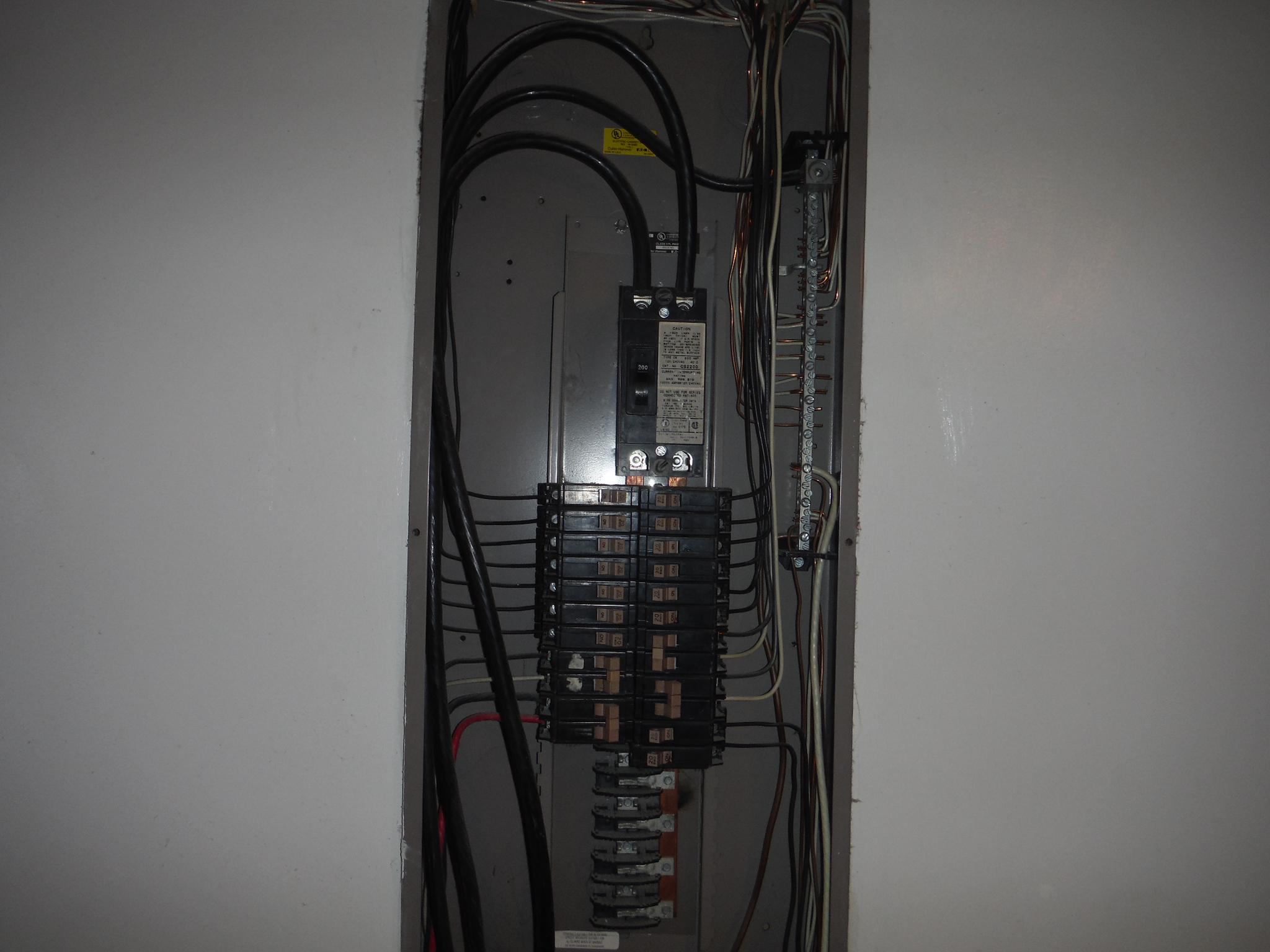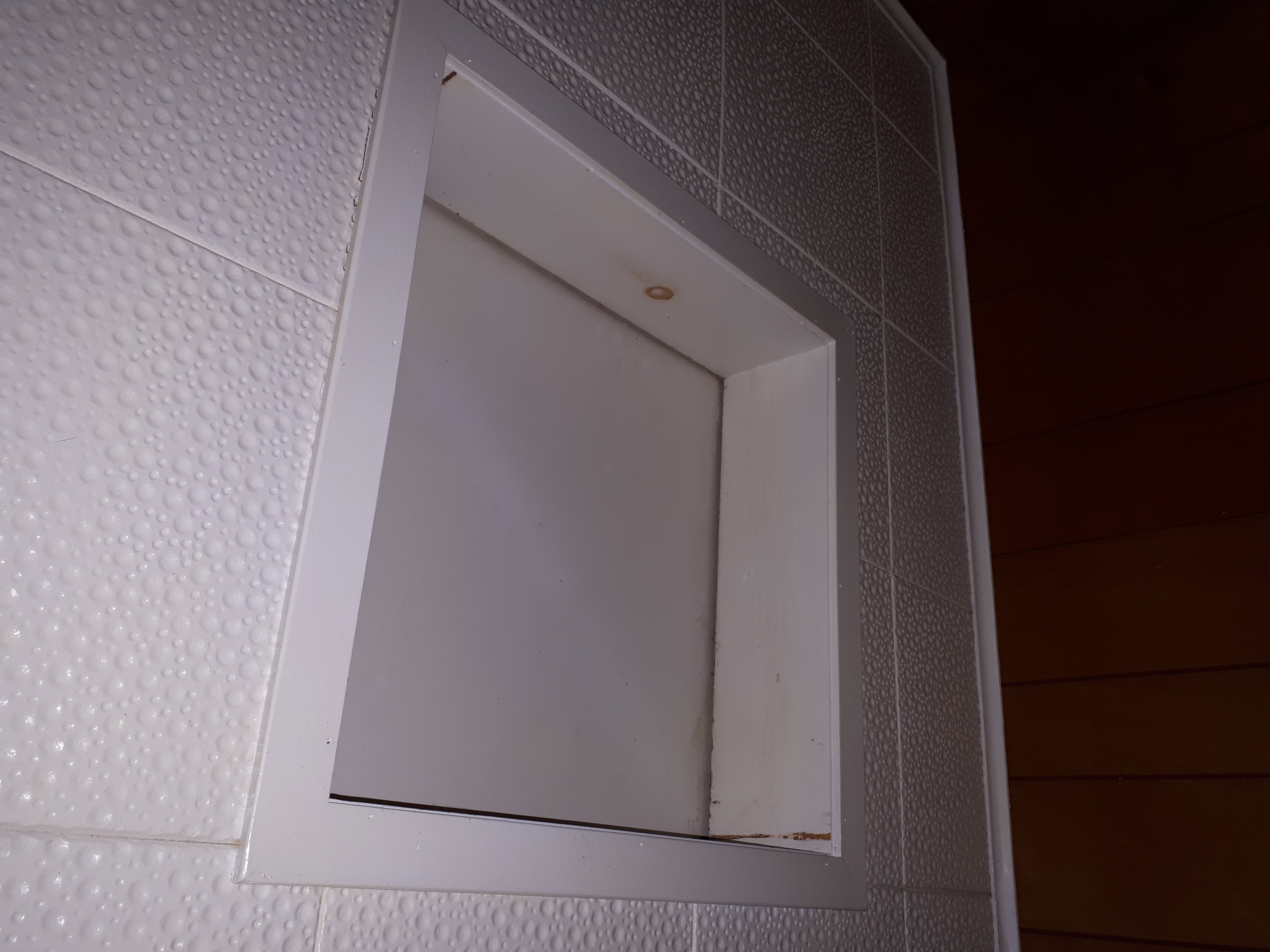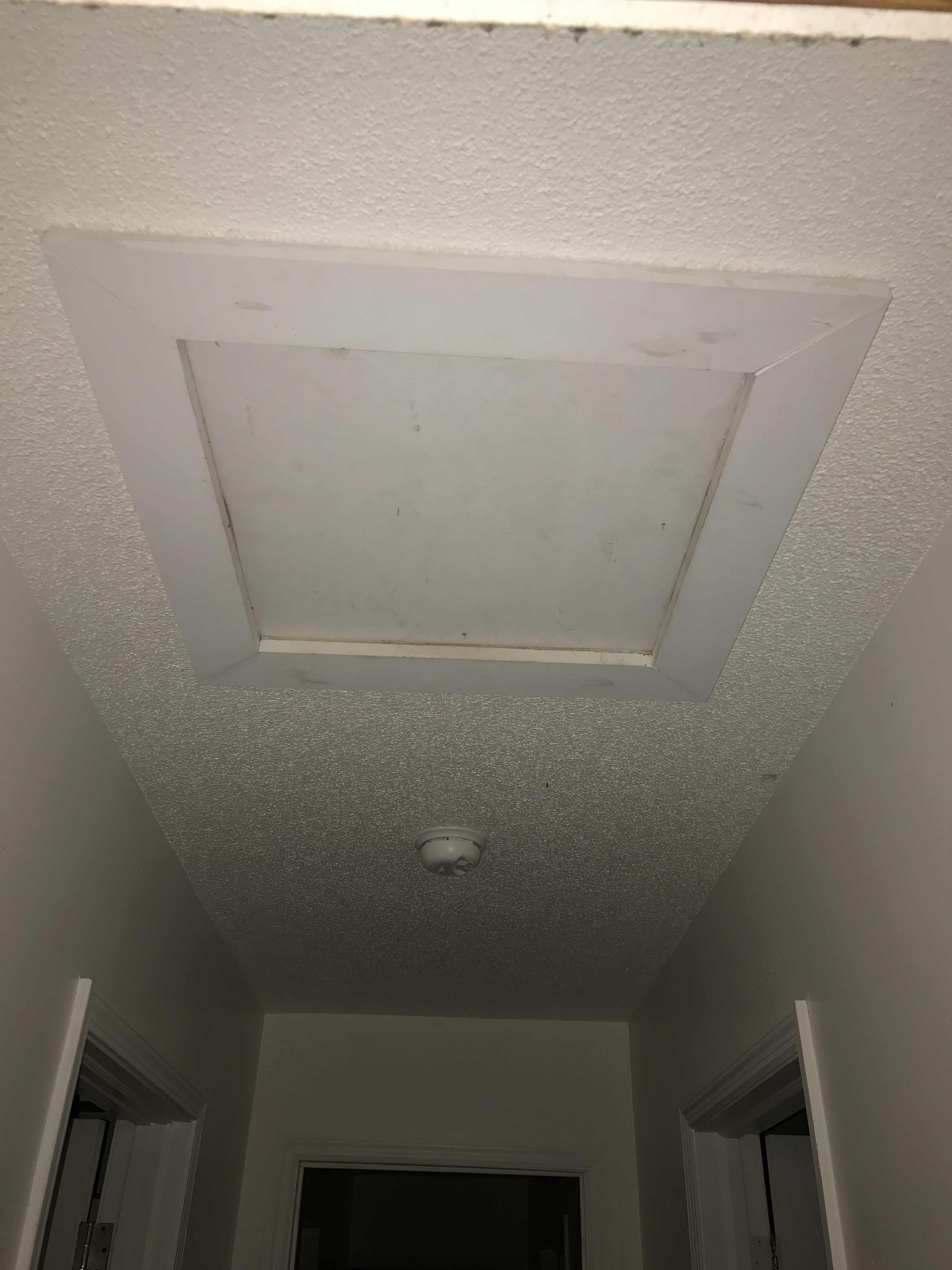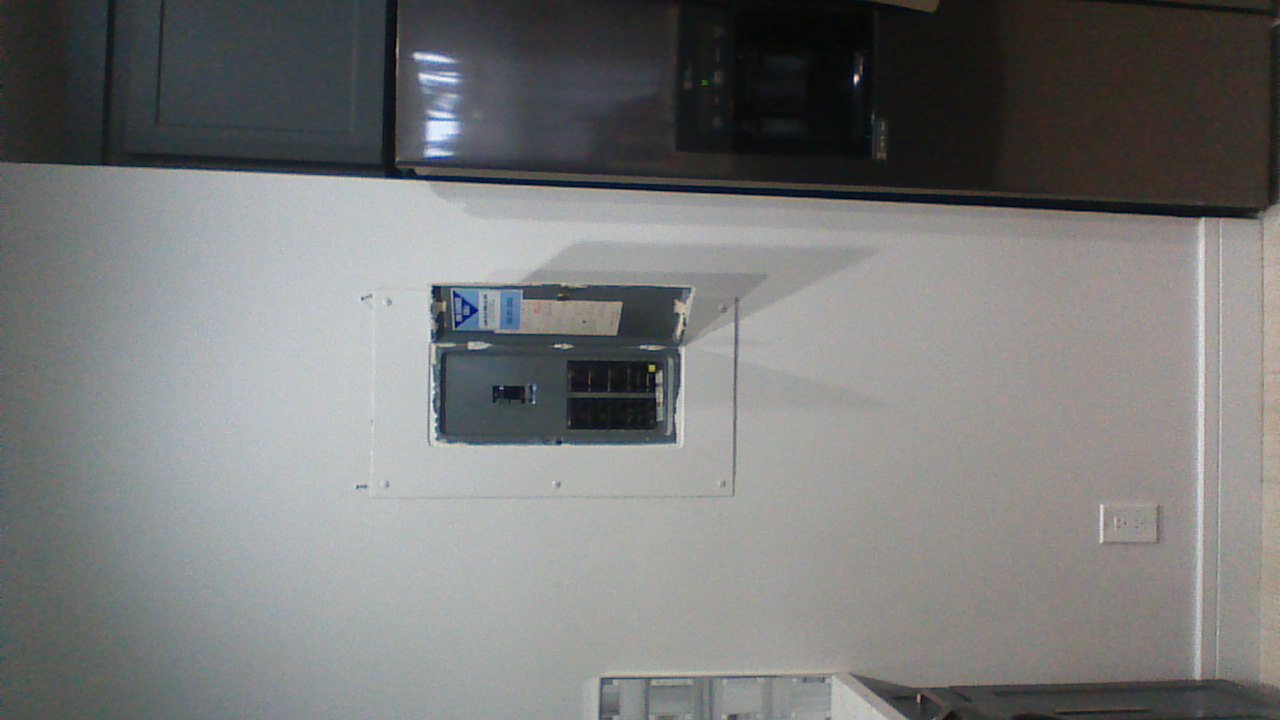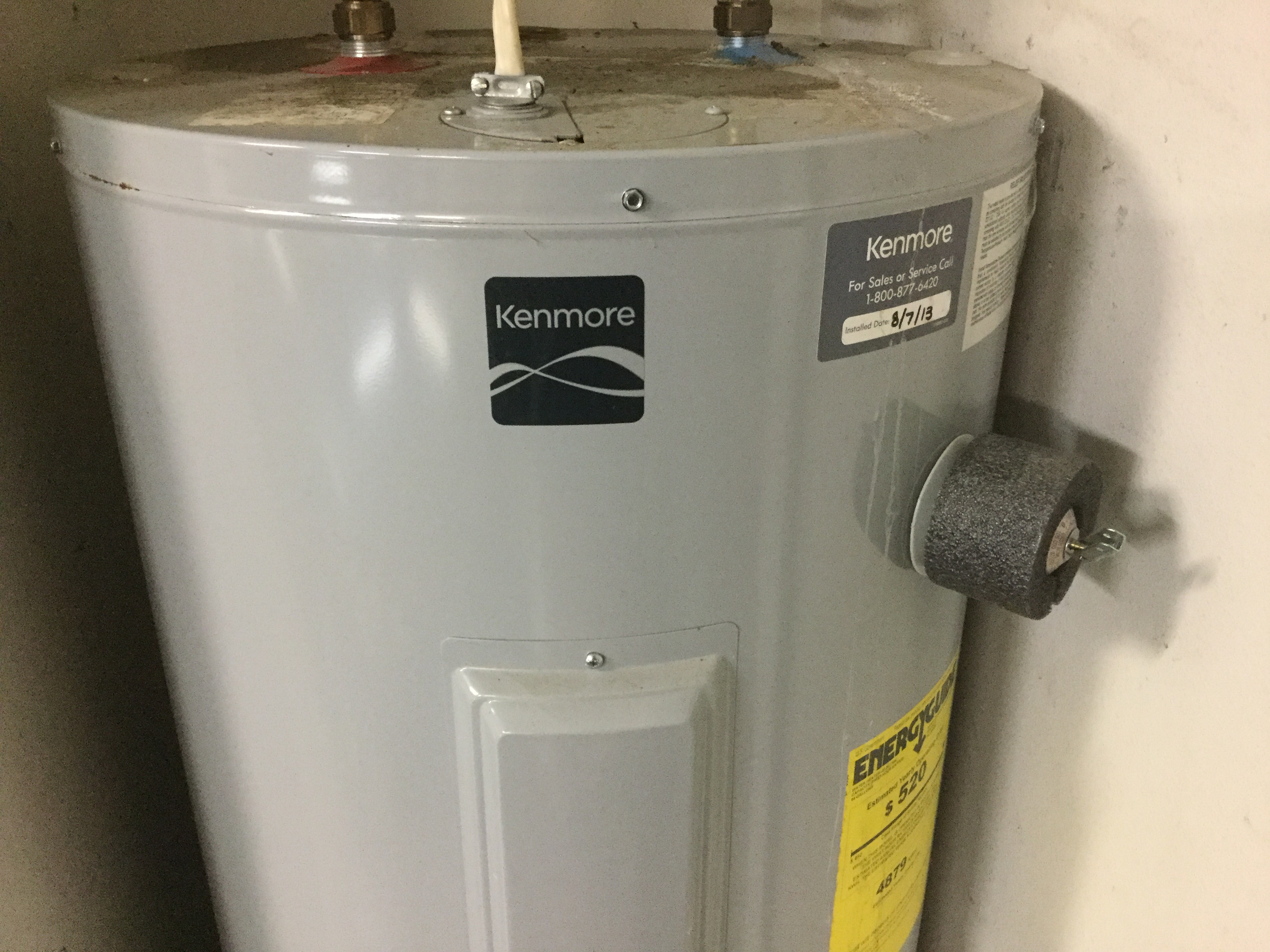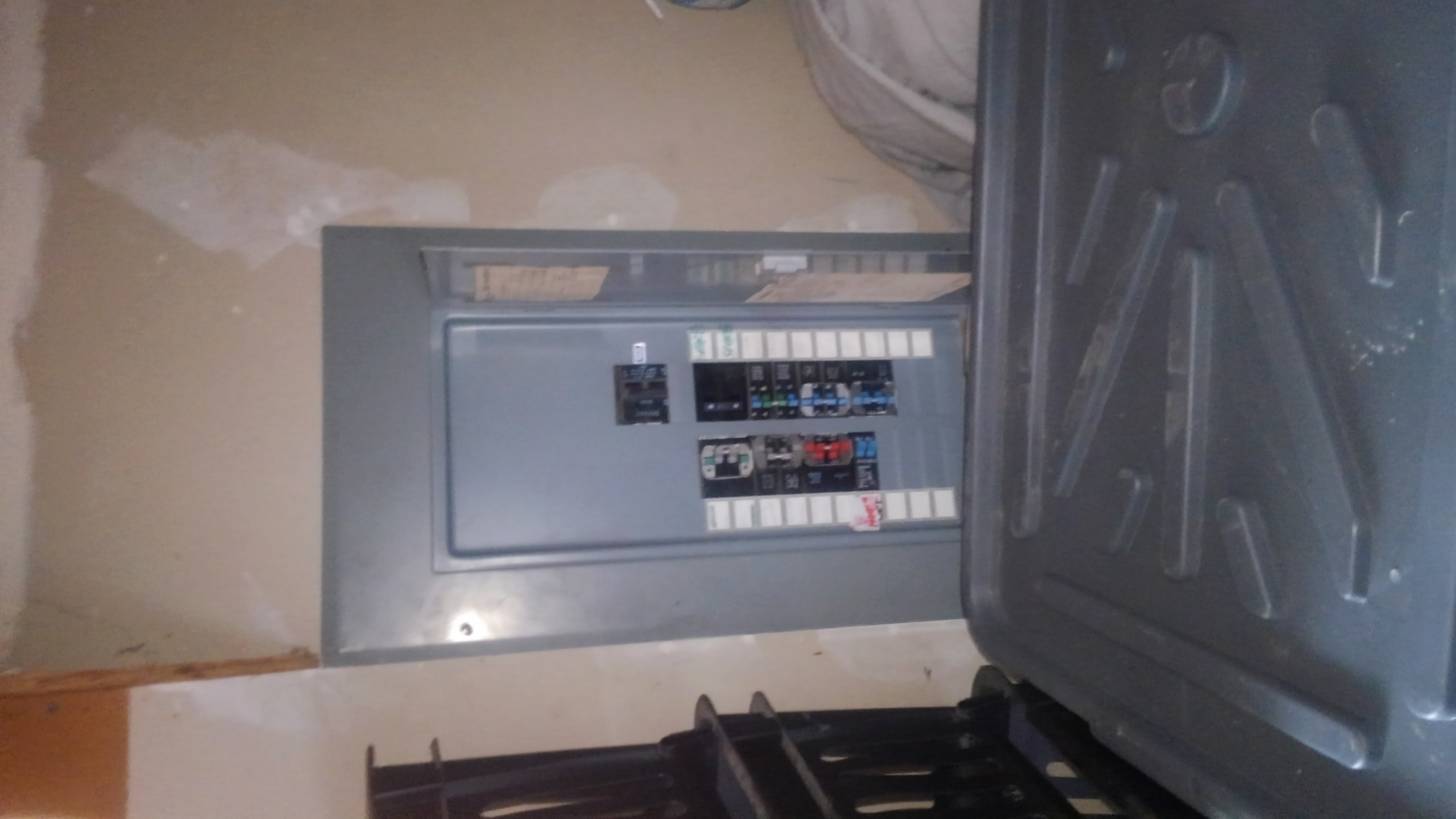Water heater located in a California garage with compliant earthquake strapping on a raised platform. The water heater is a gas type with gas and water shut offs accessible. The water heater is original with the home and during this inspection is serviceable and functional.
the electrical service pannel was NOT Inspected. the service pannel was not fully inspected due to a wasp/bees nest located behind the front face plate. We recomend having the panel further evaluated by a licenced/ certified/ or qualified electrical proffesional.
the article which I selected to write about was 15 tools every homeowner should own.
In this article what I learned was that I for one do not have everything on the list, also I was shocked to see that duct tape is considered a tool.
Attached garages can represent a fire risk. People park cars that can leak gas and oil, tend to store flammable materials and may locate things like hot water heaters and boilers that can be a source of ignition. It is important to check doors, walls, ceilings, appliance installations and penetrations to ensure proper installation so they do not increase risk.
This is a photo of the exterior of the electrical panel as well as the concrete foundation. The electric meter sits a bit off centered as well as the supply line that enters the box. The electric flows thru the meter box to the panel and distributed thru the home.
This is an image of the edge flashing of a home. It has been incorrectly installed. The edge flashing should completely cover the decking material to prevent water from wicking up into the decking material and causing roof damage. This should be corrected by a roofing contractor.
The electrical panel was located in a back room of the home. The service entrance wires appear properly sized. Covers are properly located in the cover over unused breaker spaces. Bushings and grommets were properly installed at wiring entrances. Proper clearance of 36" in front of the panel was observed.
In the main service panel the main bonding jumper must be installed to connect the grounds and neutral bars and make connection to the enclosure. Subpanels should be supplied with four wires to and have the ground and neutrals isolated.
This shows a water heater I found as it was originally installed at a relatively new home. The TPV discharge is plumbed directly into the main drain line of the home. This was reported as an safety hazard needing immediate correction.
I studied the image for clearances for pitched roofs. This image gives the minimum clearances for chimneys as they go through pitched roofs. Masonry chimneys must be a minimum of 3 feet and 2 feet higher than the nearest 10 feet of roof. For gas vent or Type L vent flues, the minimum is 2 ft minimum. This is to prevent any sparks or embers from the flue from igniting the roof as well as winds from the roof causing back draft down the chimney.
Attic access: this attic access is too small a size. Although it certainly has enough headroom in the attic space, the access size is too small by our inspection standards. Also, best construction practices would not allow the access to ‘puncture’ the ceiling vapour barrier and the access area could be through a gable end or from the garage ceiling.
I am just beginning to use a decent infrared imaging device in my inspections so the article on IR cameras was an interesting read. I have been debating if the certification course would be a wise investment but with the nuances involved in interpreting the images generated, I think there could be significant liability issues if you draw conclusions from the images without proper training.
Dryer Vent Safety: I agree with the author about dryer vent fires being more common than normally accepted. It is quite normal (almost to the point of being accepted) to have unacceptable dryer exhaust issues. This is a problem that we can address through client education.
This is a picture of a electrical panel with the “dead” cover removed exposing the wires. The service entrance shows a 200 amp breaker and all of the wires are copper. Everything seems to be wired correctly with no frayed or scorching on the wires.
This attic access is 20"x20" and does not comply with code. With the access being that size it makes it difficult for persons and/or equipment to go thruough. Access to an attic should be at least 30"x20" with 30" of headroom if the access is in the ceiling.
Arc-fault circuit interrupters AFCI’s are to be installed in all rooms of a residential home. Circuits are protected from electrical arcs with the proper AFCI outlet and AFCI breaker. Without these devices properly installed fires could occur and be potentially dangerous.
The electrical panel location was inspected and have an adequate work space above the minimum required for examinations or service also it is clear of any other component not related to the electrical equipment as HVAC ductwork or plumbing pipes.
The chimney Clarence for pitched roofs minimum required it is 10 foot (3.1 m) horizontally height above any roof surface, the gas vent must to be at minimum 3 foot (0.92 m) or type L vent must to be at minimum 2 foot (0.61 m)
This water heater does not have a pressure relief tank and does not have a pipe extension on the relief valve that should be attached and within at least 6 inches of the foor. It also does not have a pipe extension to the outside.
